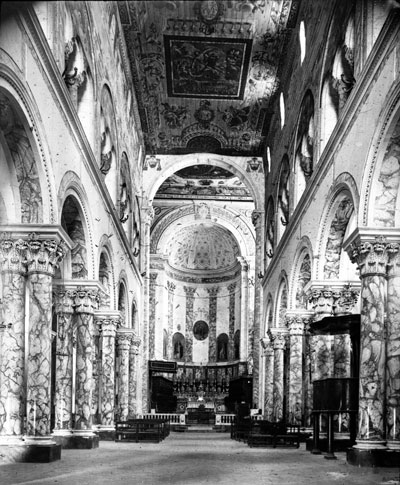
Britain’s Prince Charles rendered his greatest service to his nation in 1987 when he complained about the ugliness of postwar London architecture. “Give this much to the Luftwaffe: When it knocked down our buildings, it didn’t replace them with anything more offensive than rubble. We did that. Clausewitz called war the continuation of diplomacy by other means. Around St Paul’s [Cathedral], planning turned out to be the continuation of war by other means.”
Those tough comments by the heir to the British throne were pretty widely denounced by the modernists who rule the architectural criticism world. But give the man credit for bravery; he made his speech about the sins of urban planners to a meeting of the London planning committee.
Architecture has always stirred passions, because the shapes of buildings mean more than just how functional they are or how much shade your neighbor’s ghastly new garage extension casts over your garden. I think people take the buildings of their cities as a reflection on themselves to some degree; they’re proud of their local monuments, and they’re insulted if their city’s landmark buildings are criticized. At their best, buildings are reflections of the design feats and craftsmanship of which people are capable; at their worst, they are committee-approved strip malls that stomp on the soul.
In January, Robert A. Scott spoke at The Commonwealth Club about the design concepts behind Europe’s great Gothic cathedrals. Scott, author of The Gothic Enterprise (University of California Press, 2003), explained the role of math, religious ideas, and the desire for an emotional impact that went into creating these architectural marvels. The cathedral architects drew on the belief that the structure needed to represent the divine perfection found in natural law, represented by geometry and math.
Today, creating a large building is not going to involve discussions of being in harmony with “sacred geometry.” Instead they involve forecasting the return on investment and the time value of money – concepts created to help developers know how much of a building they can afford to finance, build and sell. These newer reasons are smarter foundations for putting together a building, but they are also important factors in filling up our skylines with cheap buildings whose expected lifetimes are measured in decades, not centuries.
When Scott took a friend on a tour of Britain’s Salisbury Cathedral, his friend stood in the back of the nave and said, ‘I’m a professed atheist, but standing here makes me feel religious. As a style of architecture, it really gets the job done.’”
That response echoes the sentiments of a friend of mine, another atheist who nonetheless approved of the great European cathedrals. She said that those massive churches were likely to be the only time the medieval locals got to see real beauty. As such, she said, they were a worthy public expense on religion.
My first postcollege job was in an old mansion that housed the headquarters of a think tank. Soon thereafter I applied for a job at a magazine published by the National Association of Realtors (NAR) in Chicago. In fact, the magazine dealt with exactly the type of
financial and investment analysis that governs the modern commercial real estate market. When
the human resources manager called to schedule my interview, she gave directions to the offices and said, “Yes, we’re the National Association of Realtors, and we have the ugliest building on Michigan Avenue.” She spoke truth.
The building was entirely without charm; however, it was not entirely without history. If you have ever watched the opening credits of the The Bob Newhart Show, Newhart’s character walks across a bridge toward his office building, which happened to be the NAR building.
Did I perform better work in the mansion than I did in the cheap-looking modern box? No. But I did enjoy the mansion office more, and I remember it often. Creating spaces in which we work and live should not be all about designers doing the absolutely least possible as long as productive work is done in that space.
Readers of Walter Isaacson’s biography of Steve Jobs know much the same thing. Jobs didn’t want to just make products, he wanted to make products with emotional appeal that felt transcendent.
Scott said as much when he explained what the designers of Gothic cathedrals were trying to achieve: “Geometry and light were fused together in an effort to create a particular image of what a space dedicated to God ought to look like. The aim was to achieve this through architecture. … [It] was meant to provide a space such that when a worshipper walked into that space, they would have a foretaste of what heaven would be like.”
Watch a rerun of The Bob Newhart Show. Funny? Yes. Heavenly surroundings? No.








